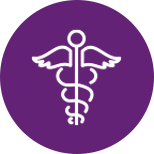
All children who are suspected victims of child abuse are entitled to a medical exam conducted by a specialized medical provider. CACs/MDTs can share with families and partner agencies, the importance of a medical exam to ensure the health and well-being of the child, to diagnose and treat medical conditions that may be related to sexual abuse; and to allow for collection of evidence that may be present on the child’s body or clothing within 72 hours (pre-pubescent children) and 120 hours (adolescents).
- CAC Director Resource: Orienting Your Medical Provider to the CAC and Multidisciplinary Team
- The Importance of the Medical Exam: What MDT Partners Need to Know
- The Medical Exam in Child Sexual Abuse Cases: An Overview for Families and MDT Members
- Updated Guidelines for the Medical Assessment and Care of Children Who May Have Been Sexually Abused
